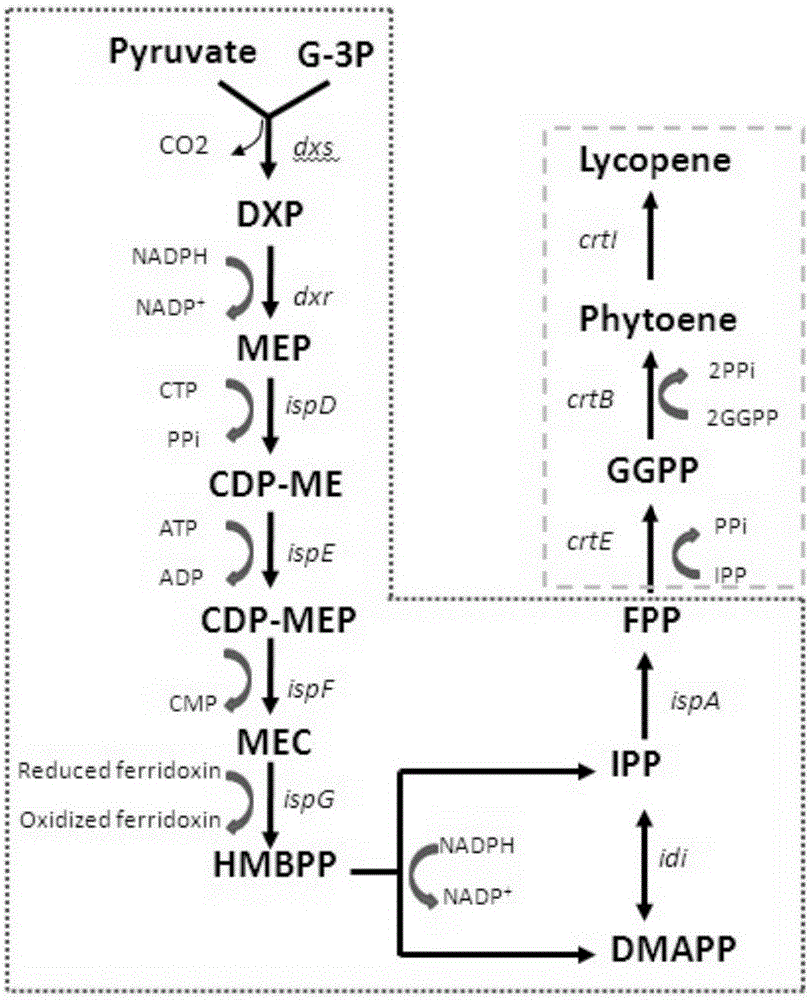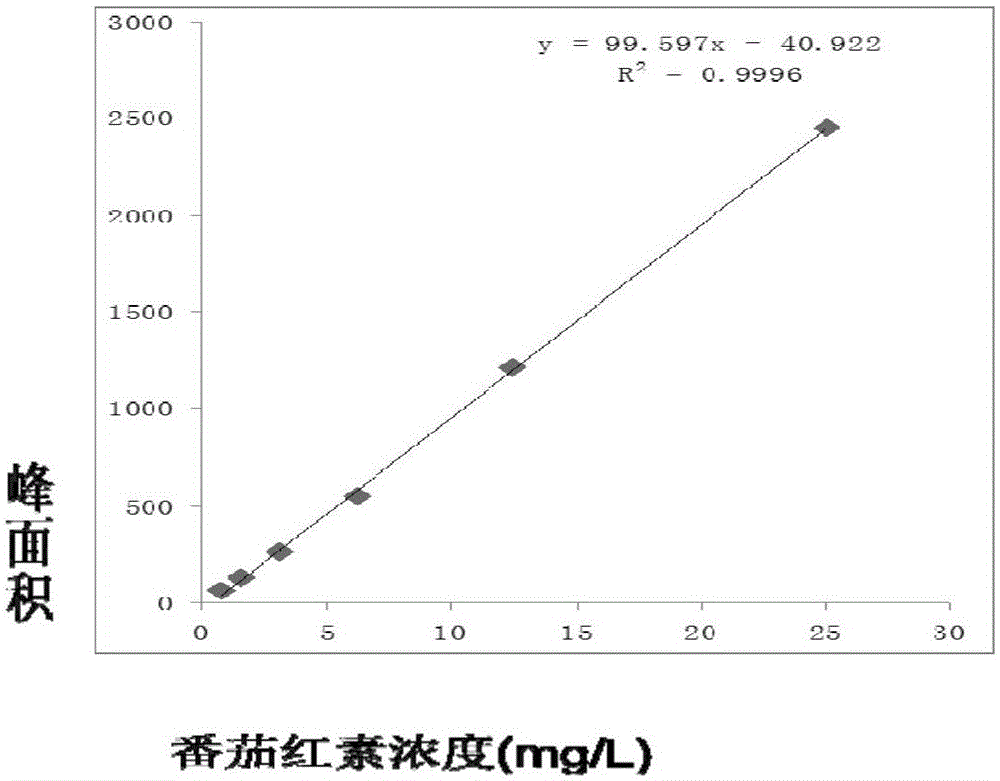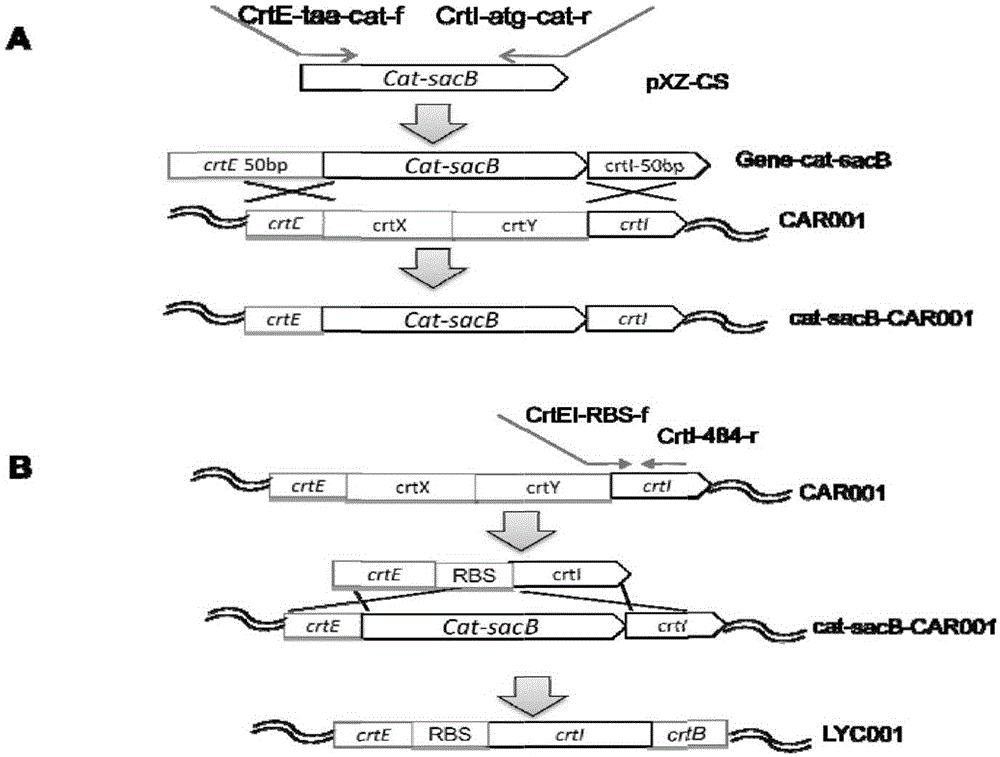A recombinant bacterium producing lycopene and its application
A lycopene, recombinant bacteria technology, applied in recombinant DNA technology, microorganism-based methods, bacteria and other directions, can solve problems such as long fermentation cycle, and achieve the effect of high yield and high production and application value
- Summary
- Abstract
- Description
- Claims
- Application Information
AI Technical Summary
Problems solved by technology
Method used
Image
Examples
preparation example Construction
[0068] The preparation method of salt-free LB is as follows:
[0069] 1. 50% sucrose solution: Weigh 500g of sucrose, dissolve in 1L of ultrapure water, sterilize at 115°C for 20min.
[0070] 2. 10% salt-free sucrose LB medium: Weigh 5g of yeast extract, 10g of peptone in 800ml of water, sterilize at 115°C for 20min. Add 200ml of 50% sucrose solution after sterilization.
[0071] 3.6% salt-free sucrose LB medium: Weigh 5g yeast extract, 10g peptone, 15g agar powder, dissolve in 880ml water, sterilize at 115°C for 20min. Add 120ml of 50% sucrose solution after sterilization.
[0072] The concentrations of chloramphenicol, ampicillin, and kanamycin in the examples were 34 μg / L, 50 μg / L, and 50 μg / L, respectively.
Embodiment 1
[0073] Example 1, Fermentation of Lycopene Recombinant Escherichia coli and Determination of Lycopene
[0074] 1. Drawing of lycopene standard curve
[0075] Accurately weigh 50mg of standard lycopene and add 1ml of dichloromethane to dissolve it, transfer the solution to a 250ml brown volumetric flask, dilute to 250ml with petroleum ether, and prepare a 200μg / ml stock solution (stored in a -80°C refrigerator middle). Use acetone for doubling dilution (2×, 4×, 8×, 16×, 32×), filter through a 0.45 μm microporous membrane into an HPLC sample bottle, and perform HPLC detection (using C18 column (4.6×250mm, 5μm); column temperature: 30℃; mobile phase: methanol:acetonitrile:dichloromethane=21:21:8 (volume ratio); flow rate: 1ml / min; injection volume: 20μl; Sample time: 20min; DAD light detection; detection wavelength is 480nm, with the peak area of the standard product as the ordinate, and the lycopene concentration (mg / L) as the abscissa, the standard curve of lycopene is obt...
Embodiment 2
[0079] Example 2, Production of lycopene by knocking out the crtX and crtY genes of recombinant Escherichia coli CAR001
[0080] 1. Knockout the crtX and crtY genes of recombinant Escherichia coli CAR001 to construct recombinant bacteria LYC001 The recombinant bacteria LYC001 is to replace the zeaxanthin glycosyltransferase gene crtX and lycopene in the β-carotene synthesis gene cluster with recombinant Escherichia coli CAR001 The prime β-cyclase gene crtY was obtained. The zeaxanthin glycosyltransferase gene crtX is shown in SEQ ID No.1, and the lycopene β-cyclase gene crtY is shown in SEQ ID No.2. Two-step homologous recombination method was used to knock out the crtX and crtY genes, and at the same time inserted between the geranyl geranyl diphosphate synthase gene crtE and the phytoene dehydrogenase gene crtI suitable for gene expression in Escherichia coli The artificial RBS sequence (shown in SEQIDNo.3). A fragment for two-step homologous recombination is amplified by ...
PUM
 Login to View More
Login to View More Abstract
Description
Claims
Application Information
 Login to View More
Login to View More - Generate Ideas
- Intellectual Property
- Life Sciences
- Materials
- Tech Scout
- Unparalleled Data Quality
- Higher Quality Content
- 60% Fewer Hallucinations
Browse by: Latest US Patents, China's latest patents, Technical Efficacy Thesaurus, Application Domain, Technology Topic, Popular Technical Reports.
© 2025 PatSnap. All rights reserved.Legal|Privacy policy|Modern Slavery Act Transparency Statement|Sitemap|About US| Contact US: help@patsnap.com



